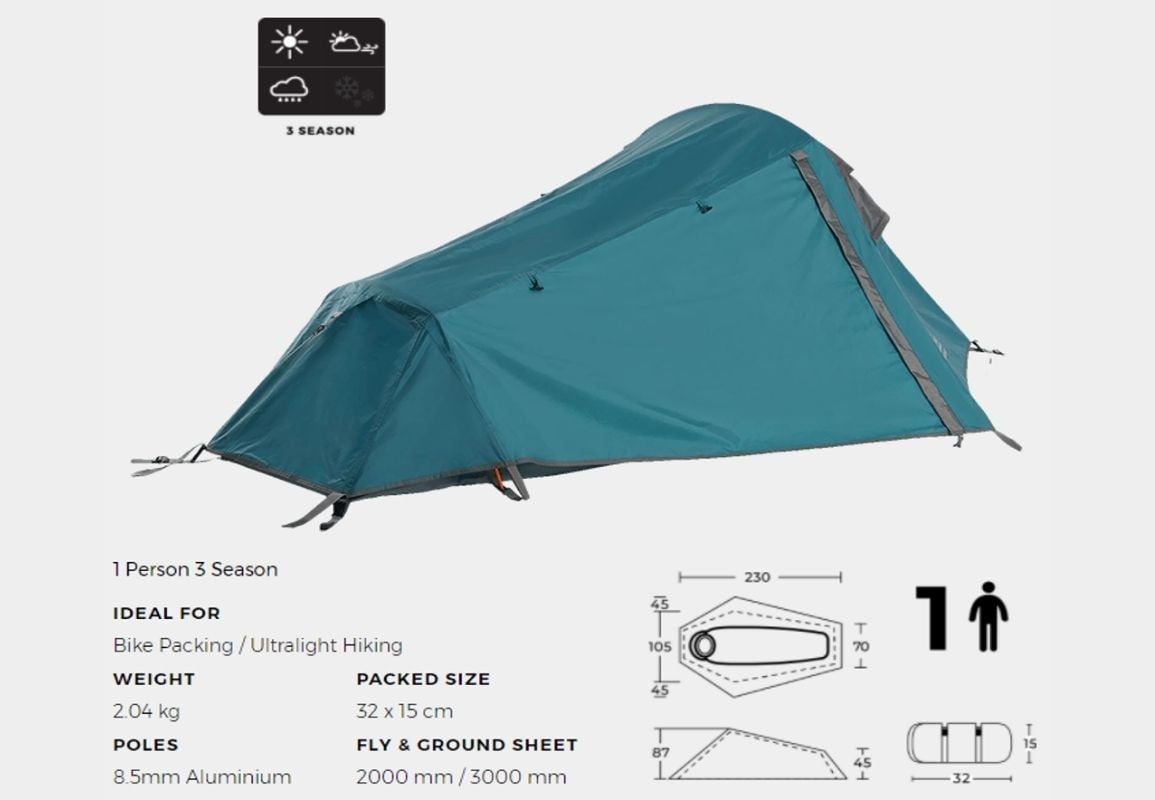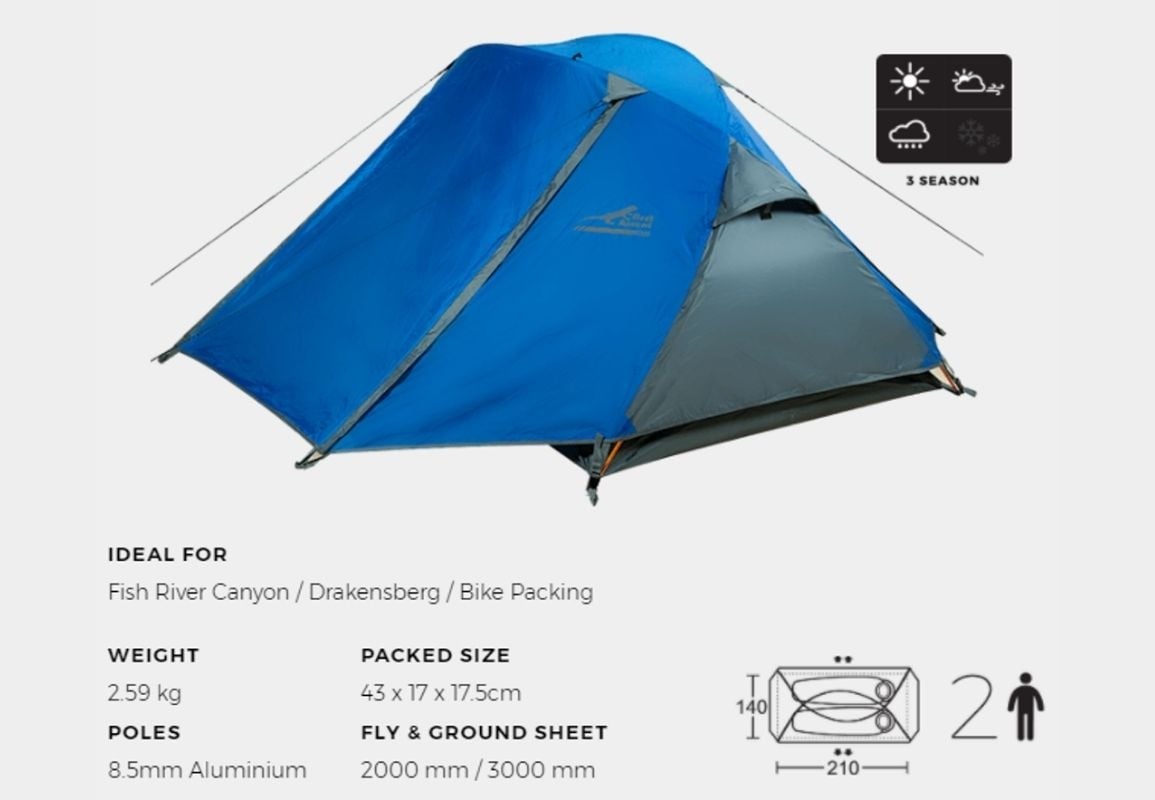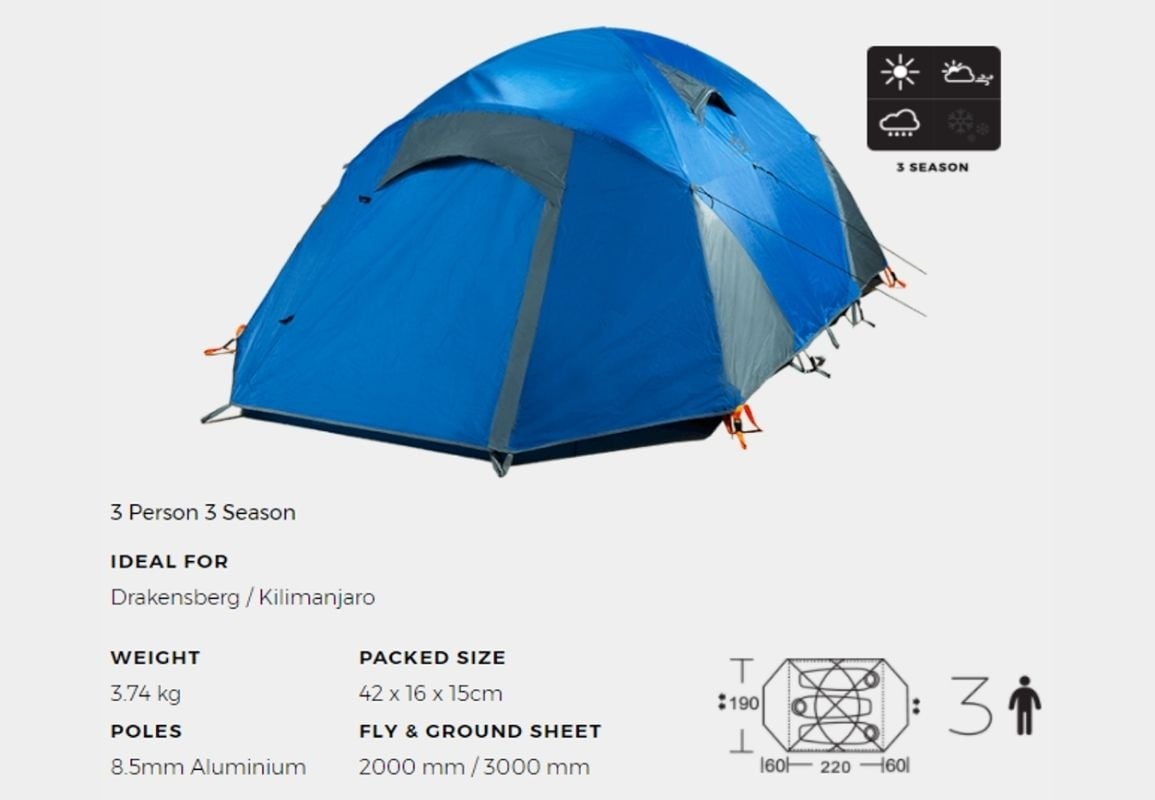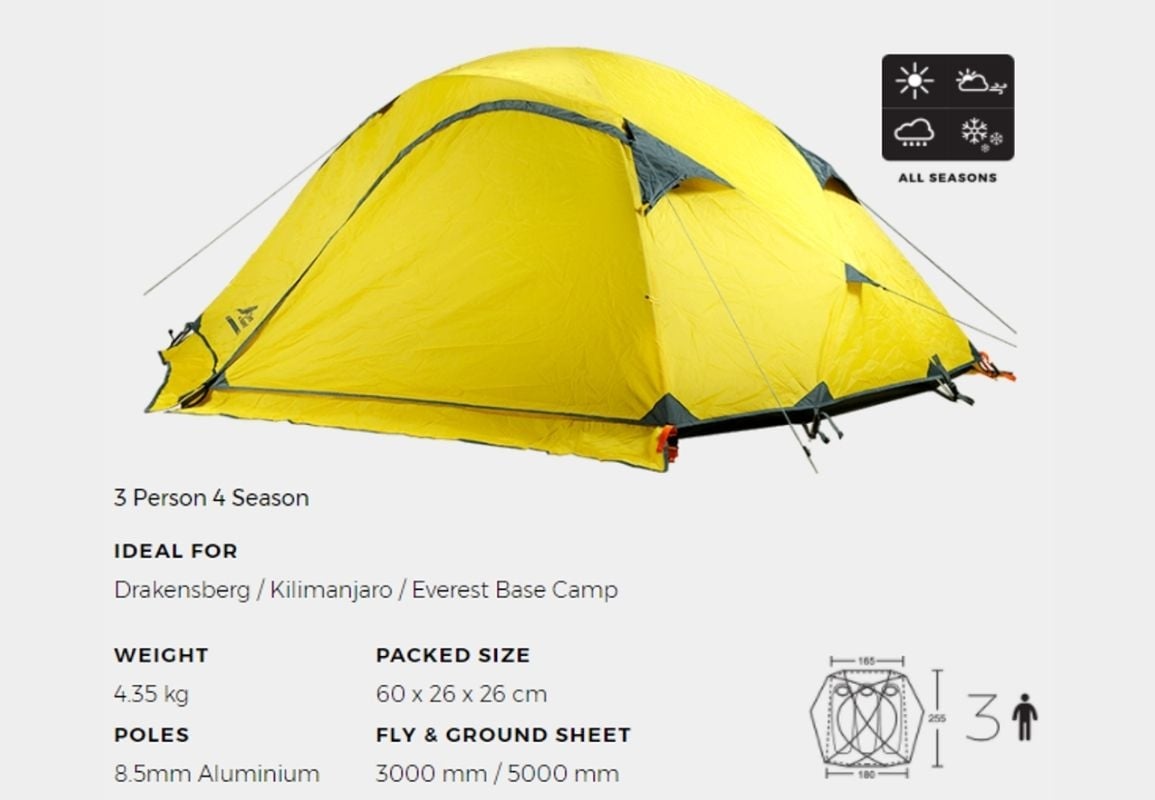Purchasing a tent can be a stressful process, what size to buy, what type to buy and the list goes on. Lucky for you, we’ve taken all the guesswork out of the buying process and have put together everything that you need to know when looking for your perfect tent. Whether you’re spending 6 cold nights in the Drakensberg, or adventuring through the Fish River Canyon during the height of Summer? We have an option to suit every adventure.
Stamina:
The Stamina Hiking tent is an ultralight, 1 person 3 seasons hiking tent that is the most compact tent in the First Ascent range. Specially designed to fit in the lower compartment of a hiking pack, the top case on an overland motorbike or to be attached to the handlebars of your bike and weighing only 2.04 kg, this tent is ideal for solo hikes or any bikepacking excursions.
Lunar:
The Lunar Tent is a versatile two person, 3-season hiking tent with ample undercover gear space and two large doors for ease of access and improved ventilation. Weighing a mere 2,59kgs it is the perfect tent for an adventure where space and weight are limited but the weather is varied.
Eclipse:
The Eclipse Tent is the ideal three person, 3-season hiking tent with a well-ventilated inner tent for warmer weather and plenty of storage space for all your essentials. The durable aluminium poles ensure the tent's structure is kept sturdy in moderate weather conditions while reflective guy ropes add to the tent’s visibility in low light conditions. The Eclipse is perfect for overnight hikes in the Drakensberg or Kilimanjaro expeditions.
Peak 3:
The Peak 3 Tent is a three person, 4-season hiking tent with a unique 4-pole design configuration for extra stability in inhospitable conditions. Vestibule areas at both side doors of the tent allow for a wind draft that can be controlled through the zipped door windows. It also features snow skirts on both sides to keep you protected during extreme weather.
Double Wall Tents- Pros and Cons
With a double-walled tent, you are usually guaranteed to have a dryer tent and more dry gear storage.
Double-walled tents have multiple doors and vestibules to keep your gear dry, but again this comfort and space comes at the expense of an increase in weight.
Double-walled tents also require more staking and attention to guying out the rainfly. In addition to pegging out the tent the vestibules must be staked out securely. Also, the tension on the rainfly may need to be adjusted after setup.
Tent rainfly fabrics, particularly nylons, tend to stretch a little when damp or wet and require re-tensioning.
Looking for more information on the specific of each of our tents? Click here for our Hiking Tent Guide




